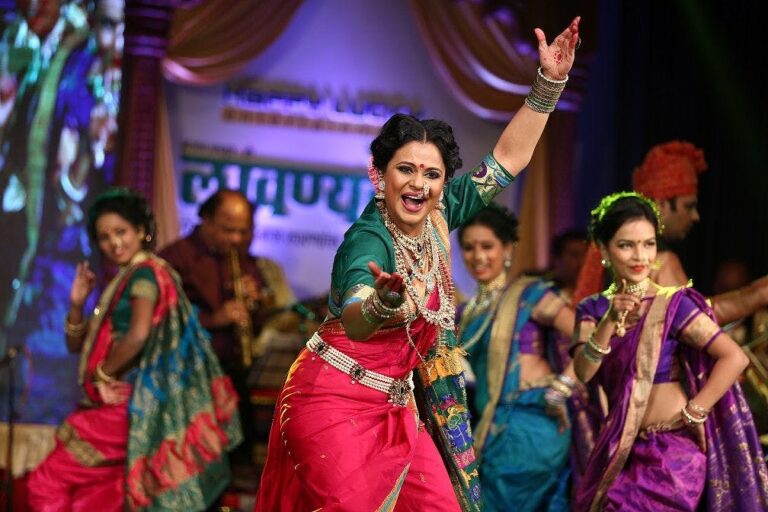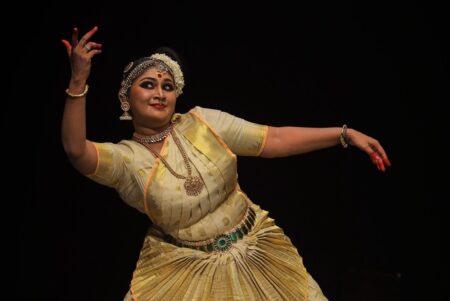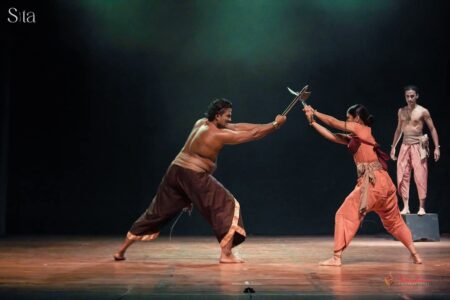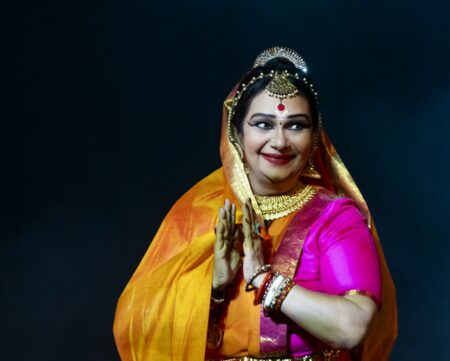The classical dance Kathak and the Maratha folk dance Lavani share techniques, having met in one phase of Maharashtra’s cultural history. They can come on stage together.
Exploring Kathak from the perspective of another art and culture brought me closer to the north Indian classical dance. I viewed Kathak through the prism of Maharashtra’s folksy Lavani. That exercise drew interesting differences and similarities between the two traditions, helping me understand the nuances of Kathak better.
To me, Lavani is one form that speaks almost the same language as Kathak. Lavani has stayed closest to my heart since my late teens, giving me a vision on what it means to be a dancer and her audience. Sensuality in the themes notwithstanding, Lavani is mature in its presentation. India is laced with an extremely diverse culture of music and dance. Often, the intricacies get lost in the sheer amazement of encountering the medley. Each of it appears magical, telling a vast range of stories. The costumes are enchanting, the movements hypnotic, the rhythms complex and the percussion exhilarating. Be it dhol, dholak or dholki that accompanies Lavani singing and dance, each instrument is enthralling.
Lavani, overall, gives me a liberating experience. Dance in general is capable of it, but Lavani is special with its grassroots appeal. Kathak, often under the density of its rich classicism, tends to hold back human desires and their stark expressions. Lavani may appear merely frivolous to some, but I’d say its emotional quotient is deep.
Predominantly performed by women, it puts them on a powerful pedestal and lets them speak openly about their struggles and needs, while exploring their sensuality and sexuality to the fullest through its literature. The Lavani nayika may be flawed, yet she’d be beautiful. In Kathak, restraint rules, courtesy also a perceived connection with the divinity. Often, spirituality is the central theme.
Historical interlinks
Lavani, true, has borrowed certain ideas from Kathak. That happened during the rule of the Peshwas as prime ministers (1674-1818) under the Maratha Empire amid Mughal attempts to invade Maharashtra. The Mughal rulers brought with them Persian artists, who influenced Kathak as the dance in courts. These Kathak artistes, in turn, influenced Lavani. Even today, Lavani is a confluence of Kathak moves and Marathi folk.
Both forms share the dance techniques of toda, chakradhar, rela and laggi. While the tabla is Kathak’s chief percussion, it is the dholki for Lavani. Both instruments come up with high levels of rhythmic complexities.
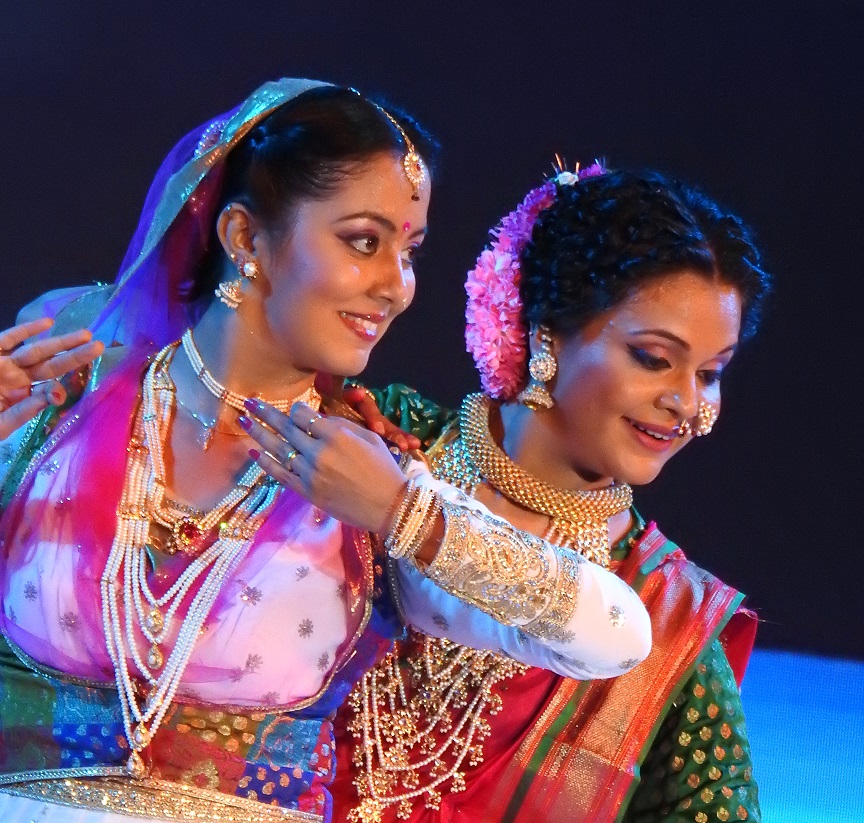
There is the Gaulan — a song/dance segment portraying the romance between Krishna and his Gopis. Literally, gaulan means ‘milkmaid’. The poetry has anecdotes from the love between Radha and Krishna, portraying their romance and mischiefs. These include the popular episodes such as stealing butter from the milkmaids and Krishna hurling stones at Radha’s mud-pot of water. Largely, Kathak and Lavani explore these themes through thumri and gaulan respectively.
Lavani, typically, begins with an invocation to Ganesha, followed by the gaulan. After this would be the welcome Mujara number. Here, the Lavani dancers enter with their head covered by a veil, revealing their faces first to a Ganesha idol in the back of the stage and then to the audience. Vivacious pure-dance pieces follow with footwork being the focus. The steps find accompaniment from the dholki even as the harmonium — like in Kathak — keeps time. The dance syllables are intricate: they are an exploit of the ghungroos in sync with rhythmic patterns in keherwa and teen taals.
Facial abhinaya
Lavani explores facial emoting in great details. In fact, elements of abhinay explored in the Baithakichi Lavani draw great similarities with Kathak. Here, the dancer, seated, would perform with emphasis on the emotive aspect of the dance. We see this in Kathak too: Baith ke Bhaav. (Baith ke and Baithakichi both mean ‘to be seated’.) This element of thumri is largely presented by Kathak dancers exploring themes of romance and separation. You’d find these in Lavani too.
Building up a scene or a character with the use of miming is another commonality between the two dances. Both glorify the festival of Hori, the romantic advances of the hero towards the heroine disguised by the opportunity to play with colours. While portraying such a sequence, the dancer will build up a scene where the nayika and her sakhis will gather and make coloured water to spray on each other and smear the red gulal on their palms and cheeks. This gradual build-up of a storyline leading to the main theme of the song exists in both Kathak and Lavani.
As a Kathak practitioner, these similarities gave me the confidence to approach and perform my dance. Lavani, born out of distinctly different cultural and social backgrounds, employs Marathi as its literature. For Kathak, it is Hindi or Braj. Lavani breaks those lines that are barriers for Kathak as a more dignified form, yet they can walk hand in hand. This, I can say from a 2016 production of mine.
Named ‘Kathak ki Ada, Lavani ka Thumka’, it gave me a chance to bring the two dances to one stage. Having trained in both forms and understanding both mediums well, I chose to perform the Lavani counterpart. The work shows Kathak’s tarana and thumri alongside Lavani’s mujara and laggi. It is an active interaction between the two disciplines, a merger that blurs any fine line of difference between Kathak and Lavani. Each style retains its individual personality even as they cross all boundaries of exploration.

